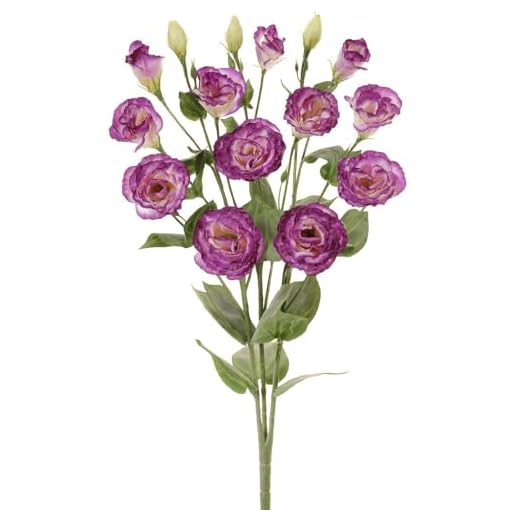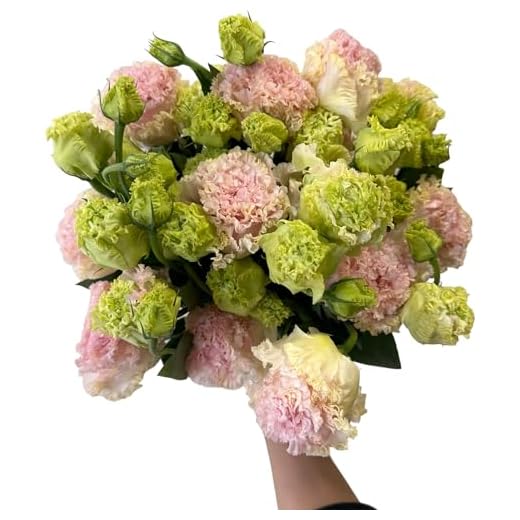



Rest assured, this lovely flower is not harmful to my furry companions. Unlike some other plants that can pose risks, this particular bloom is considered safe for those little whiskered explorers. If your curious kitty decides to take a nibble, there’s no need to panic.
However, while this bloom is harmless, it’s always wise to monitor any unusual behavior. If you notice vomiting, diarrhea, or lethargy after your pet has interacted with any plant, it’s best to consult a veterinarian. Keeping a close eye on their health ensures they stay happy and thriving.
For those who enjoy decorating their homes with greenery, this flower can be a delightful addition. Just keep it out of reach if your feline is particularly mischievous. A little precaution goes a long way in maintaining a safe environment for our beloved companions.
Is Lisianthus Toxic to Cats?
These flowers are not harmful to my kind. While many plants can pose risks, this one doesn’t contain any harmful compounds for felines. If you’re considering bringing these blooms into your home, rest assured that they are safe for curious paws and noses.
Potential Reactions
Although they are generally safe, some individuals may still experience mild gastrointestinal upset if they ingest them. Signs to watch for include vomiting or diarrhea. If such symptoms occur, a quick consultation with a veterinarian can provide peace of mind.
Care Around Plants
Even non-harmful varieties can still cause minor issues. Always monitor your furry friends around new plants. It’s best to keep any greenery out of reach to prevent any nibbling. Creating a safe environment ensures that exploration remains worry-free.
| Plant Name | Safety Status |
|---|---|
| Lisianthus | Safe |
| Common Toxic Plants | Unsafe |
Understanding Lisianthus: Botanical Characteristics
These flowers belong to the Gentianaceae family, showcasing a stunning array of colors, including white, pink, and purple. Their bell-shaped blooms, often resembling roses, emerge from slender stems and can reach up to 30 inches in height. The plant’s leaves are lanceolate and have a glossy finish, contributing to its overall aesthetic appeal.
Typically thriving in well-drained soil, this species prefers a sunny location, making it ideal for garden beds or containers. It requires moderate watering, ensuring the soil remains moist but not waterlogged. These blossoms are often grown as annuals in cooler climates, while they may behave as perennials in warmer regions.
In terms of growth, they can take several months to flower, so patience is key. Regular deadheading encourages more blooms, enhancing their visual impact throughout the growing season. Additionally, they are known for their sturdy stems, making them popular in floral arrangements.
Understanding these details can help anyone looking to cultivate this beautiful plant, ensuring a vibrant display and a rewarding gardening experience.
Identifying Symptoms of Ingestion in Felines
If you suspect your furry friend has consumed a certain flower, look out for the following signs:
Common Symptoms
- Vomiting
- Diarrhea
- Lethargy
- Loss of appetite
- Drooling
- Abdominal discomfort
Behavioral Changes
Pay attention to any changes in your pet’s behavior. If they seem unusually withdrawn or restless, it may be a cause for concern. Monitor them closely for:
- Increased vocalization
- Hiding or seeking isolation
- Unusual aggression or irritability
Should you observe any of these symptoms, it’s crucial to contact your veterinarian immediately. They can provide the necessary care and advice. Additionally, maintaining a healthy diet is essential, especially if your cat has underlying health issues. Consider looking into cat food for cats with heart disease to ensure your pet receives the best nutrition.
Immediate Actions to Take if Your Cat Eats Lisianthus
If you suspect I’ve nibbled on a certain flower, assess the situation without delay. First, check my mouth and the area around it for any remaining plant material. Remove any pieces you find, but make sure to wear gloves to protect yourself.
Next, observe my behavior closely. If I show any signs of distress, such as vomiting, drooling, or lethargy, take a note of when it started and the symptoms I exhibit. This information will be crucial for the vet.
Contact a veterinarian immediately, even if I’m not showing symptoms yet. Provide them with the details about what I might have consumed and my current health status. Follow their instructions carefully, which may include bringing me in for an examination.
Do not induce vomiting unless a vet advises it. Sometimes, this can do more harm than good. Keep me calm and comfortable while waiting for professional help. Remember, acting quickly can make a significant difference in my recovery. Stay alert and keep your phone handy for any updates from the vet.
Preventing Access to Lisianthus in Your Home
Keep these beautiful plants out of my reach. It’s essential to place them on high shelves or in rooms that I don’t have access to. Consider using hanging planters or wall-mounted displays to elevate them further. This way, I can’t accidentally nibble on the leaves or petals.
Creating Barriers
Use baby gates or pet barriers to restrict my movement in areas where these plants are located. If you have a specific room for your flowers, ensure the door can close securely. I can be quite curious, so keeping me out of tempting spaces is a smart move.
Alternative Plant Choices
Opt for non-harmful greenery that can brighten up your space without posing a risk to my health. Spider plants, bamboo palm, and Boston ferns are excellent options that won’t cause any issues if I get too close. This way, everyone can enjoy a lush environment without worry.
Regularly check your home for any new additions to your plant collection. If you bring in new flora, double-check their safety for my well-being. Keeping me safe is a priority, and being proactive about plant choices makes a big difference.
Alternatives for Cat-Friendly Gardening
For those looking to create a safe environment for furry companions, there are plenty of beautiful and non-harmful plants to consider. Here are some excellent alternatives that can brighten up your garden without posing risks to your four-legged friends:
1. Calathea
This houseplant is known for its striking foliage and is completely safe for pets. Its vibrant leaves can add a touch of color indoors.
2. Spider Plant
With its arching leaves and air-purifying qualities, this plant is both attractive and harmless. Cats often enjoy playing with its dangling sprouts.
3. Boston Fern
This lush, green plant thrives in indirect sunlight. It’s safe and can help improve air quality, making it a great addition to any home.
4. Bamboo Palm
Adding a tropical feel, this palm is non-toxic and provides a great source of shade and humidity for indoor spaces.
5. African Violet
These charming flowers come in various colors and are safe for pets. They can bring a splash of brightness to any room.
6. Ponytail Palm
This unique-looking plant is easy to care for and adds a whimsical touch to your space while being completely safe for your furry friends.
7. Parlor Palm
A low-maintenance option that thrives in low light, the Parlor Palm is another non-harmful choice that can enhance any indoor area.
8. Christmas Cactus
This festive plant blooms beautifully during the holidays and is safe for pets to be around. It can serve as a lovely seasonal decoration.
Incorporating these plants into your home or garden will create an inviting atmosphere while ensuring the safety and well-being of your beloved companions.
Consulting a Veterinarian: When to Seek Help
If ingestion of a certain plant occurs, immediate consultation with a veterinarian is essential. Signs of distress can manifest quickly, so it’s wise to act fast. If I experience symptoms like vomiting, lethargy, or unusual behavior, my human should not hesitate to contact a vet.
Recognizing Urgent Situations
In cases where symptoms escalate, such as difficulty breathing or seizures, rushing to the clinic is non-negotiable. Even mild symptoms should be taken seriously, as some reactions can worsen over time. Keeping a close watch on my health is the best way to ensure I stay safe.
Documenting the Incident
It’s helpful for my human to gather as much detail as possible before visiting the vet. Information such as the plant’s name, the amount ingested, and the time of ingestion can assist the vet in providing the right care. Keeping a record of any changes in my behavior or health can also be beneficial.
For those considering home improvement to avoid future accidents, exploring options like a best single phase air compressor can help with various household tasks, ensuring a safer environment for curious cats like me.








